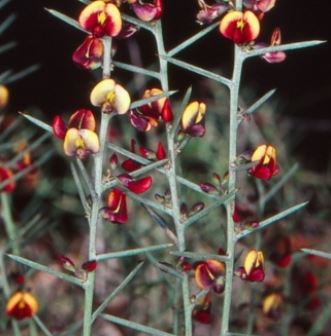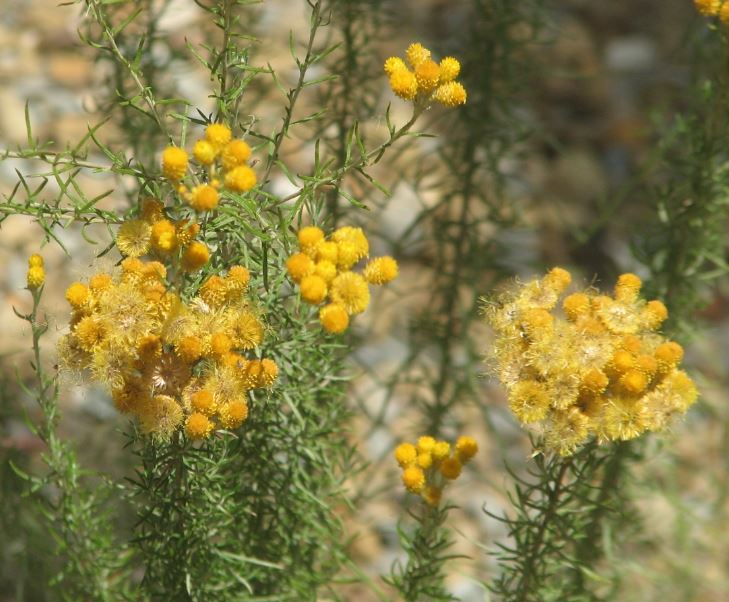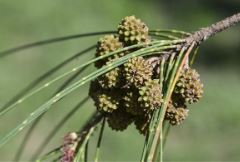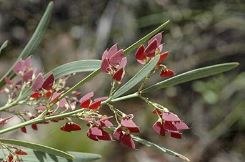This plant is a slender multi-stemmed shrub to 2m tall with grooved hairless branches. Rounded rigid pungent leaves, spreading or slightly pointing upwards. Yellow pea flowers have a crimson centre. Further information is provided from Canberra Nature Map.
If you think you may have this plant on your property but need assistance to confirm the plant ID please contact Kath as YAN can provide volunteers to assist landholders ID Climate Ready plants on their property.


Landcare nursery managers within YAN are requesting regional landholders who have large numbers of mature plants, which are part of the YAN Climate Ready list, to consider collecting local seed when the seed matures in coming months. If you are keen to assist in this venture please email Kath.
Click here to view the full list of Climate Ready plants grown across our Landcare nurseries in Murrumbateman, Bowning-Bookham and Yass.







